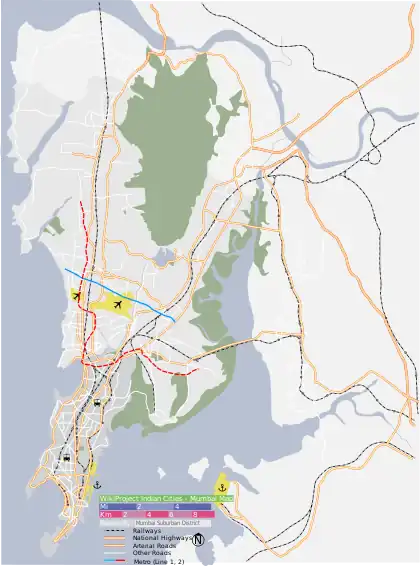| Ghodbunder Fort | |
|---|---|
घोडबंदर किल्ला | |
| Ghodbunder, Thane District, Maharashtra | |
 Ghodbunder Fort courtyard | |
 Ghodbunder Fort Ghodbunder Fort (Mumbai) | |
| Coordinates | 19°17′46″N 72°53′18″E / 19.2962°N 72.8883°E |
| Type | Fortress |
| Site information | |
| Owner | |
| Open to the public | Yes |
| Site history | |
| Built | c.1550-1730 |
| Built by | Portuguese |
Ghodbunder Fort is a fort located in Ghodbunder Village, Thane, Maharashtra, India, on the hill just south of the Ulhas River. It was built by the Portuguese and then occupied by the Maratha Empire, before being used as the East India Company's district headquarters. The place was called Ghodbunder because it was where the Portuguese used to trade for ghode (horses) with the Arabs. Hence the name Ghodbunder: ghode (horses) & bunder (port).
History

In 1530 the Portuguese arrived in Thane, and began fortifying the hill area as early as 1550. There are many old maps and texts which mention continual attempts by the Marathas to capture the fort, which the Portuguese had named 'Cacabe de Tanna'. The Portuguese were able to successfully defend these attacks for many years,[1] including an attack in 1672 by the powerful forces of Chhatrapati Shivaji. The fort as it seen today was completed in 1730 and the church in the fort still stands,[2] and is now used as a hotel. The fort remained under Portuguese rule until the Maratha Empire, under military commander Chimaji Appa, successfully besieged the fort and took it over from the Portuguese in 1737.[1][3] Following its capture, Shahu I ordered the strengthening of the fortifications, initiating the construction of the tower.
In 1818, the British occupied the fort and made it the headquarters of the district administration for the East Indian Company, with a district collector stationed in Thane.[4]
Although the fort currently lies in ruins, the government of India set out plans for its renovation in 2014, including the beautification and landscaping of approximately 4 acres of surrounding land.[5] The fort itself is under the control of the Archaeological Survey of India (ASI).[5]
References
- 1 2 Ashar, Hemal (3 December 2007). "Mid-day". Retrieved 30 March 2009.
- ↑ Karkari, R.P. (2008). The Charm of Bombay. READ BOOKS. p. 423. ISBN 978-1-4097-9294-9. Retrieved 27 March 2009.
- ↑ "Incredible India: Places to Visit Maharashtra: Ghodbunder (43 Km.)". Archived from the original on 14 October 2007.
- ↑ Rao, Shilpa (17 May 2007). "History becomes mystery". Archived from the original on 8 August 2007.
- 1 2 Mehta, Rajshri (31 January 2014). "Plans afoot to beautify ruined Ghodbunder Fort". The Times of India. Archived from the original on 2 February 2014.